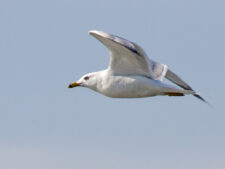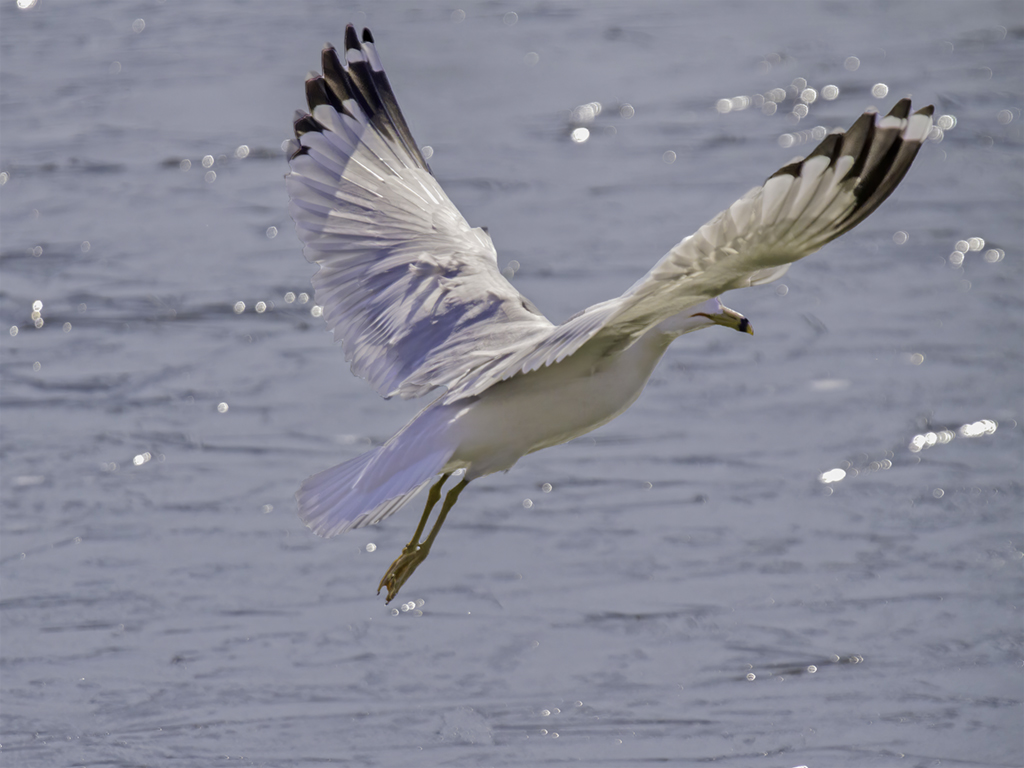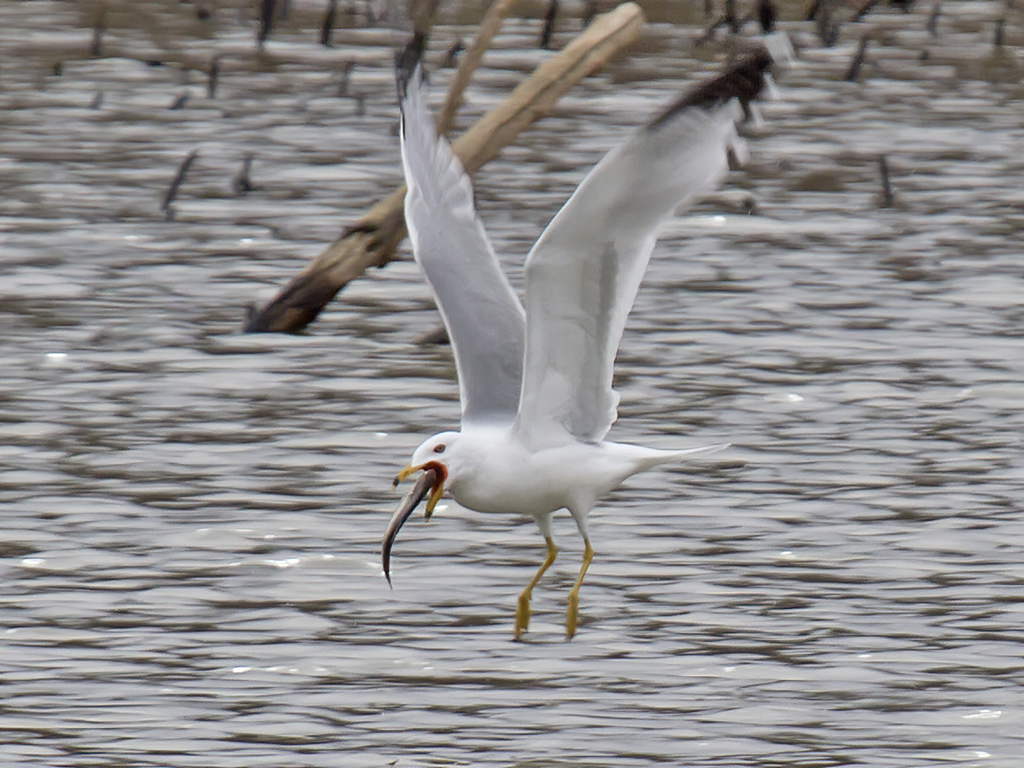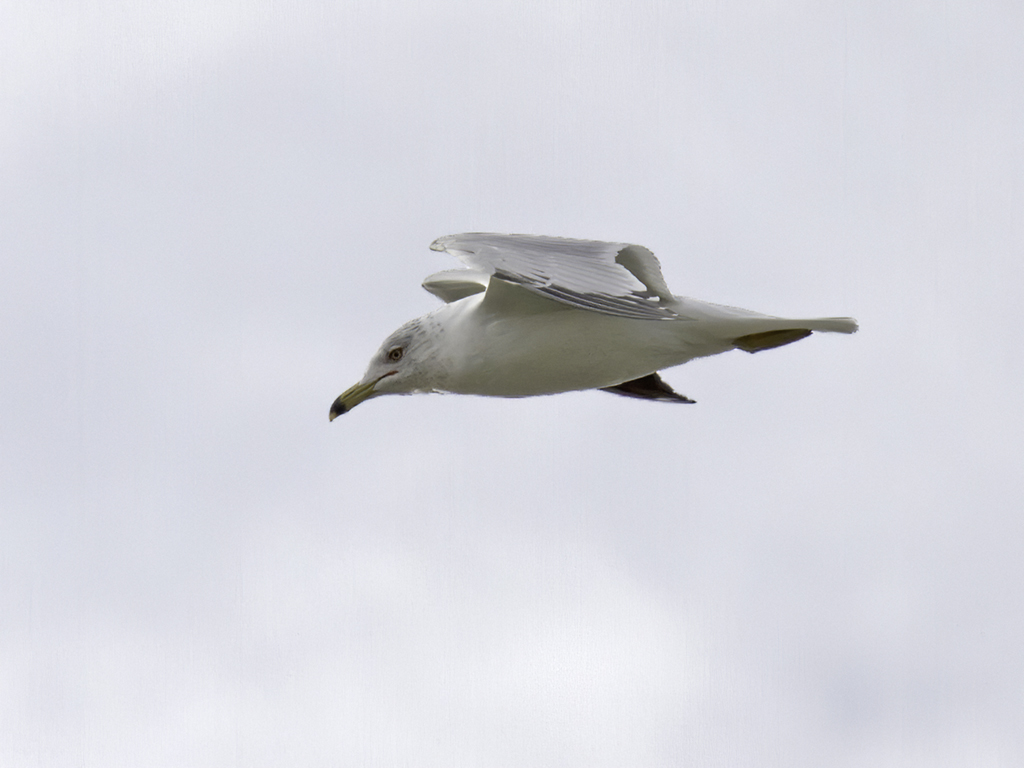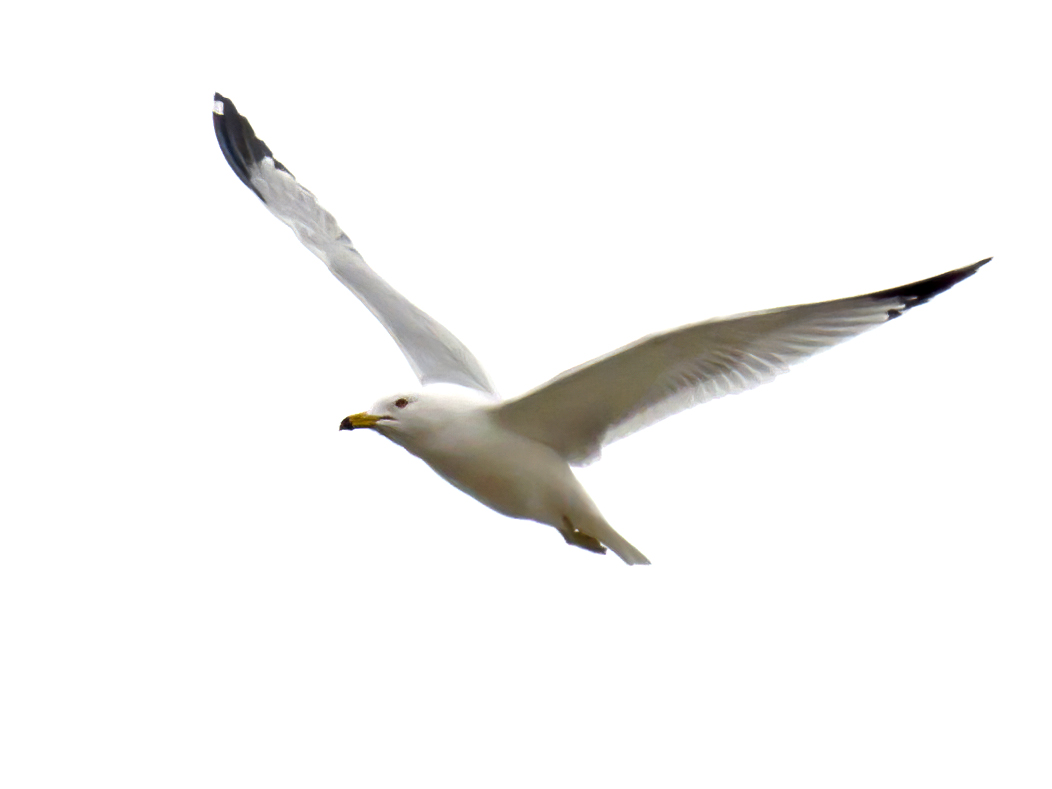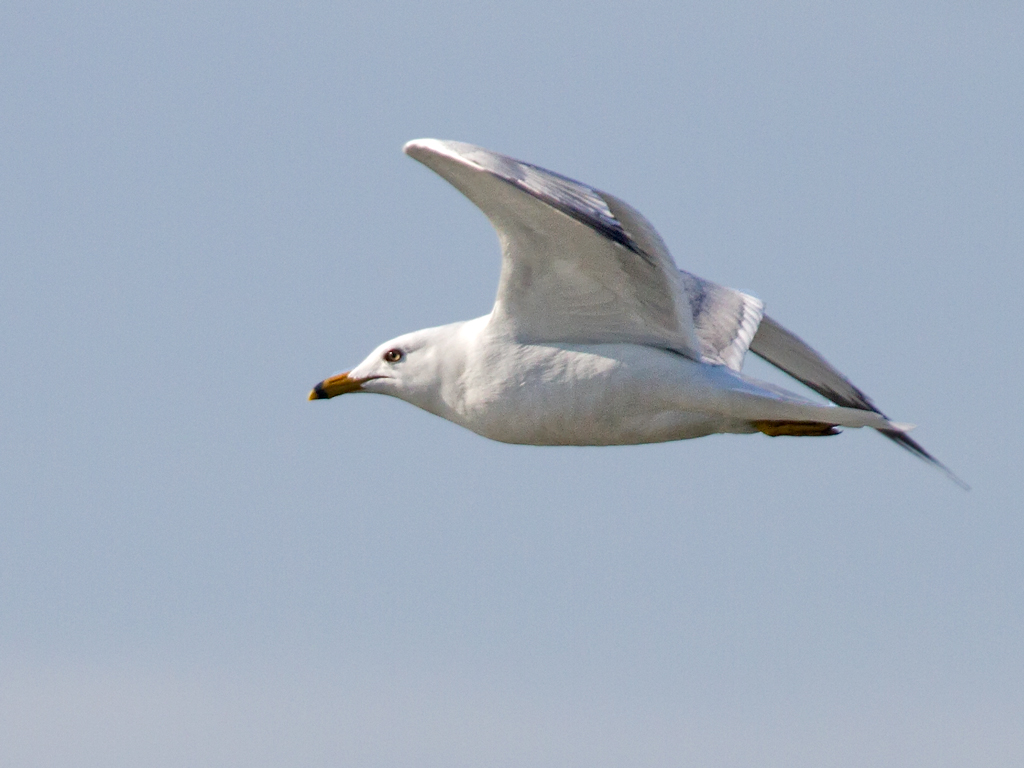
17.5 inches long. 48 inch wingspan. The Ring-billed Gull is a medium sized gull with a bright yellow bill with a complete black ring near the tip of the bill. The eyes and legs are yellow. On adult spring birds the head neck, breast, tail, and belly are white. The back and upperwings are pale gray. The primaries are black with two white spots on the outer primaries. On fall birds there are thin dark streaks on the head. Immature gulls are very complex and it is best to consult a field guide for help identifying immature Ring-billed Gulls.
The Ring-billed Gull is a common migrant through the Omaha area. It may be seen flying over the Forest from mid February through mid May in the spring and again from September through December in the fall.
The Ring-billed Gull is primarily an inland nesting gull that frequents garbage dumps and parking lots as well as bodies of water. This species showed a severe decline from 1850 to 1920, but has since rebounded to become one of our most common and familiar birds. There are now an estimated 3 to 4 million individuals. It is an opportunistic feeder that prefers insects, earthworms, fish, rodents, and grain.
Disclaimer: The content of NatureSearch is provided by dedicated volunteer Naturalists of Fontenelle Forest who strive to provide the most accurate information available. Contributors of the images retain their copyrights. The point of contact for this page is: Phil Swanson.

